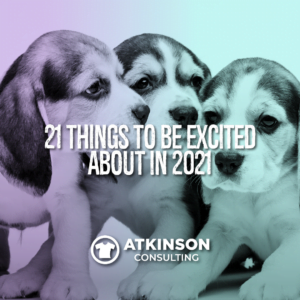In your company how often are you thinking about “What happens next?”
Championing this one thought could significantly improve your efficiency, communication, teamwork, and best of all, profits.
How?
Let’s explore the notion of “What happens next?” and you can see that it just could be the key you are looking for in many different areas of improvement.
Sales – What Happens Next?
Since we all know that nothing happens in business until something is sold, let’s start there.
Have you fully defined the “next step” in your sales process?
The Sales Process
For example, the phone rings or an email comes in from a prospective customer. What happens next?
- Have you defined how your staff communicates with them? This could be with a phone greeting or email signature. What are the details of your customer experience?
- Is there a checklist, order entry tool, or software that you use to gather information? How are you defining what is needed or what needs to be on that checklist?
- For everyone that is quoting, are they using the same process? If you gave them a complicated test order to quote, would they all arrive at the same answer?
- Can everyone find and use information easily? Think about reorders. Is it an exact reorder from the last time, or has something changed such as the quantity in the size range or an element on the artwork like the year?
Who is Downstream?
If you consider your workflow in your business to be a river, order entry is at the headwaters. Everything flows down from there.
The information gathered and used when the order is placed in your system triggers the work and activity of everyone in your company downstream.
It has to be perfect.
Otherwise, staff members will have to stop what they are doing and ask, “Hey, what’s this mean?” Or worse, they won’t ask at all and make costly mistakes.
“What happens next?” after the order is placed in your company? Does each department know exactly what to do, and more importantly, when to do it?
- I’ve argued before that the Ship Date is the most important piece of information on an order, as it defines the deadline of when that order has to leave the building.
- You should not have to “pad” your Ship Dates to have an accurate schedule. If you are, that is a management or leadership challenge that needs to be corrected. Don’t know how? Click here and let’s talk.
- When an order is placed in the system, that should trigger all of the departments in your company to either begin or schedule the work. Everyone should be trained and self-motivated to take it from there. If you have to run your shop with a daily production meeting you are doing it wrong.
“What Happens Next?” Should Define Priorities
Consider the obvious. There are only so many hours in the day.
When that tsunami of work is headed your way constantly, how should each workgroup prioritize their workload so everything is accomplished effectively, with quality, and on time?
For starters, each department head should own the outcome and performance of their team.
Both in victory and defeat, it is their job to oversee the success. This means that they have to have their head up constantly and be looking at what has been added, and balance the workload with a sense of urgency.
- How long should each task take?
- What are the obvious challenges that need to be solved?
- Are there any concerns or questions? Raise them immediately.
- What will be the easiest? What will be the most difficult?
- Will the jigsaw puzzle pieces for the schedule fit with what is already booked for the team or department in question?
For leaders, correct and timely information is critical to making good decisions. It’s what drives the decisions in the “What’s Next?” process.
Question: Are you getting the correct information, in a timely manner, to your teams so they can empower themselves to make better decisions and know exactly “What happens next?”
What If “What Happens Next?” Isn’t Working?
Just maybe your shop isn’t as efficient as it should be. That’s ok. You can change that by simply rethinking a few things.
Let’s start by making small changes. Not big changes. Tiny ones.
Why small?
For starters, they are easier to manage and implement than huge sweeping modifications. Not to mention, but busy people are more apt to make a lot of small changes that stack up or accrue over time, than one big adjustment that sucks the life out of you.
Start Here
Begin by asking, “What isn’t working like it should?” Nothing fancy.
Get your team together. Write down everything that needs attention. Big or small, it doesn’t matter. Write it all down. Use a whiteboard or big newsprint pad so everyone can see the choices.
Then, prioritize. Get everyone’s opinion on what the most impactful change should be.
Document the Current State
List each step. What’s critical for the “What happens next?” exercise is to document exactly that.
Who get it? When? Where? How should it look? How long does it take?
Map out the current flow. Remember, you want to document what you are doing first before making changes, as this is how you determine if the new idea is better.
Measure everything and anything. Take pictures or videos.
Then, get your team together and review. How can you improve it? Especially with the handoff to someone downstream from the current process in question.
The end of one process is the beginning of another.
After that, “What happens next?”
“A good plan violently executed now is better than a perfect plan executed next week.” – George S. Patton
“Doing the best at this moment puts you in the best place for the next moment.” – Oprah Winfrey
“When a thing is done, it’s done. Don’t look back. Look forward to the next objective.” – George C. Marshall





